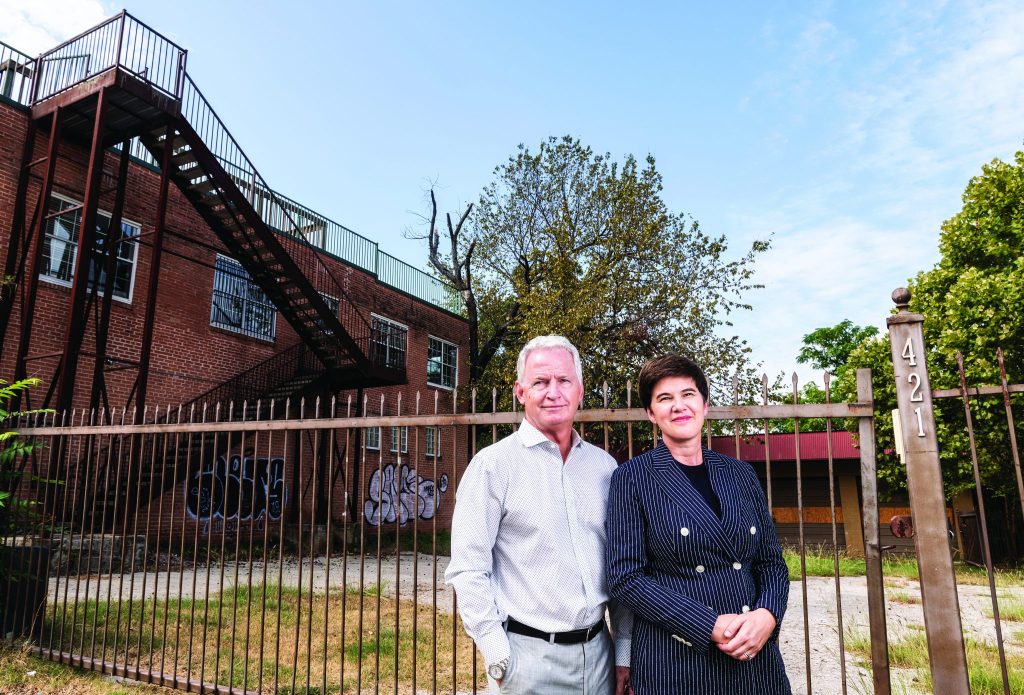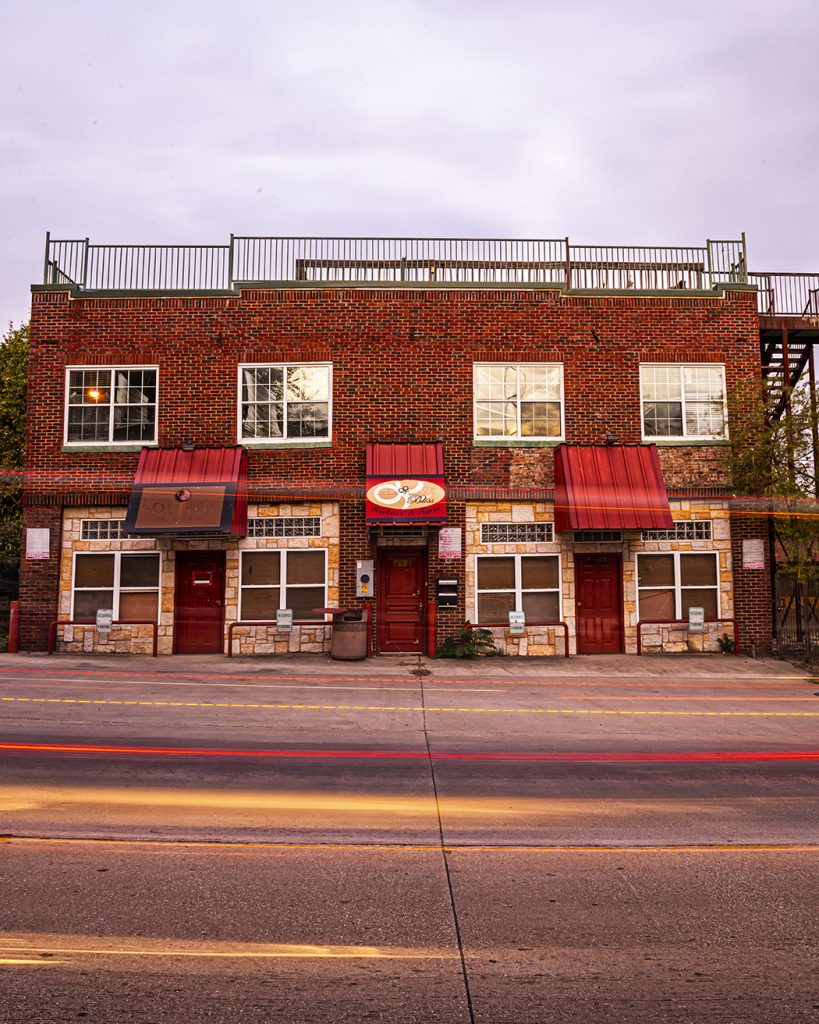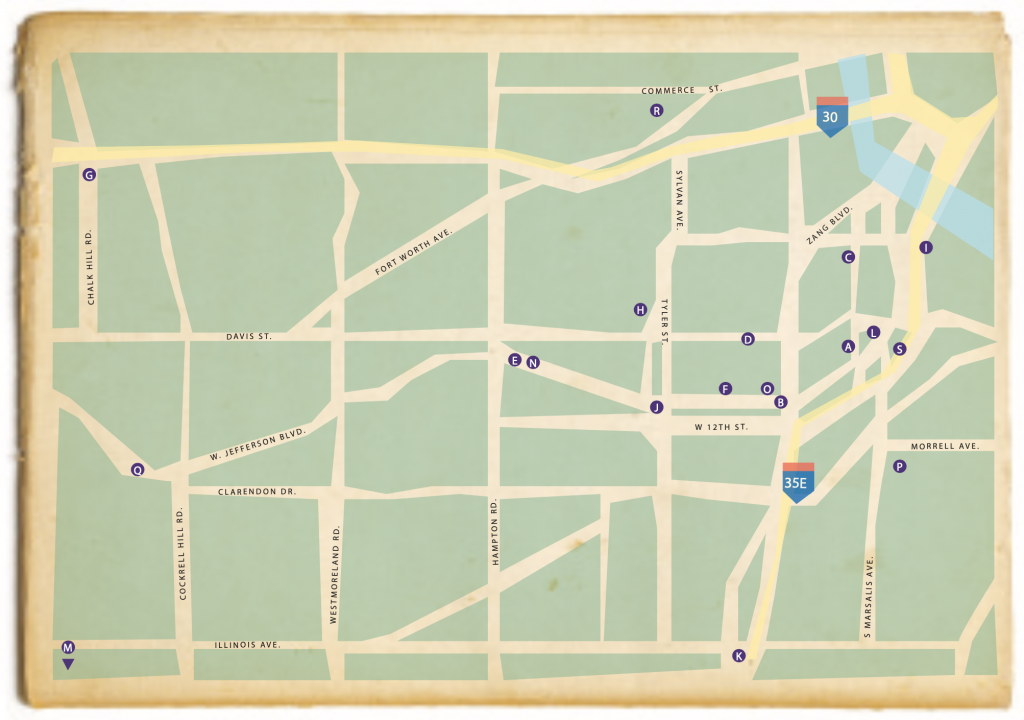Timm and Meshea Matthews wanted to create a small, unique hotel like the ones where they stay when they travel.
“Like a hotel that used to be a schoolhouse or a library or something,” Timm Matthews says. “We love those places, and Dallas doesn’t do a lot of that.”
They found a business partner and decided to buy a two-story building in Oak Cliff.
The 1920s building, on North Beckley at East Seventh, has a roof deck with views of Downtown and just the kind of old urban charm they were looking for. They also bought a former mechanic’s garage adjacent to the building with plans for a restaurant.
They started planning to turn it into a boutique hotel with 12-15 rooms and a restaurant named after Matthews’ grandmother, Mabel’s.
But their dream was almost crushed by the City of Dallas parking code.
City code requires one parking space for every 100 square feet of a restaurant, and one space per hotel room.
The Matthews’ project fell 16 spaces short of parking for the hotel and restaurant, even with allowances for a legacy building.
They still needed more than 8,000 square feet of parking for a hotel comprising just 5,160 square feet.
City Plan Commission members at first leaned toward denying the Matthews’ request for a parking variance, which required the creation of a planned development district with its own parking rules specifically for the two properties.
Consultant Rob Baldwin argued that it was a choice between creating a new use for an old building and creating a parking lot. Easing parking requirements facilitates preserving the character of the block.
“Think about the last city you went on vacation to, you actually traveled to go to on purpose,” Baldwin told the City Plan Commission. “Did you go there because there was ample parking?”
Besides that, the planned hotel is near the Bishop Arts stop of the streetcar line, and renting a car is not as common as it once was for travelers.
The parking code, “assumes that no one is taking Lyft or Uber or public transit, which isn’t true for a hotel anymore,” City Councilman Chad West says.
The Matthews won their case. They are planning to start work soon on the restaurant, and once that is up and running, start on the hotel.
The case inspired West to request for an overhaul of the Dallas parking code.
“We can save old buildings if you give up a little bit of parking,” he says.
West is asking for a review of the parking code, especially the requirements for hotel parking, restaurants, apartments and condos and buildings near transit-oriented development.
West found that while hotel and restaurant uses are allowed for the building, the city’s parking code wouldn’t allow it because it doesn’t have enough parking spaces.
“Uptown and Downtown would be impacted the most,” West says. “It could be useful in areas of opportunity to take a parking diet in some areas. You might see new uses coming into old buildings.”



Oak Cliff historic landmarks:
A Old Adamson High School, 201 E. Ninth St.
B Albert A. Anderson House, 300 Centre St.
C Betterton House, 705 N. Marsalis Ave.
D Bishop Arts Building, 408 W. Eighth St.
E Cedar Crest House, 2223 W. Jefferson Blvd.
F Christ Episcopal Church, 534 W. Tenth St.
H Kings Court Apartment, 1234 Kings Highway
I Kovandovich House, 523 Eads Ave.
J Mallory Drug Store, 900 W. Jefferson Blvd.
K McAdams Cemetery, 409 Guthrie St.
L Oak Cliff United Methodist Church, 541-549 Jefferson Blvd.
M Sharrock/Niblo Farmstead, 6900 Grady Niblo Road
N Sunset High School, 2120 W. Jefferson Blvd.
P Zion Hill Missionary Baptist Church, 909 Morrell Ave.
Initiated landmarks:
Q Mountain Creek Interurban Bridge, 4577 W. Jefferson Blvd.
R Struck House, 1923 N. Edgefield Ave.
Lost landmark:
S Elizabeth Chapel, 1026 E. Tenth St.




